Virginia Road Trip -10/2/2021
Today, while spending an extended weekend in Rockville with Sarah, we took a long country drive through the
Blue Ridge Mountain region of Northern Virginia.
We left Rockville at about 8:00am and made the two hour drive to Front Royal. After a drive thru breakfast
at Dunkin', it is here in Front Royal that we entered Shenandoah National Park at its northern gate.
One of the park's best known features is Skyline Drive. It is the main road that runs the span of
Shenandoah. The 105-mile road bisects the park from north to south, tracing the ridgeline that runs down the
spine of the park.
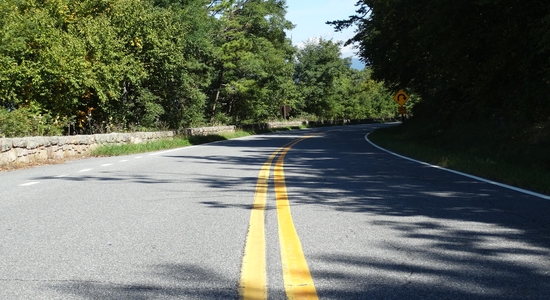
Our tour along Skyline Drive began around 10:00am. Throughout our leisurely drive we made numerous stops at
the scenic overlooks along the route to take in the views and capture some photos of the granite peaks, pastoral
valleys, wooded hollows and vast horizons.
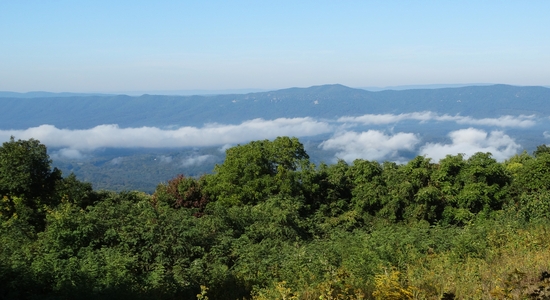
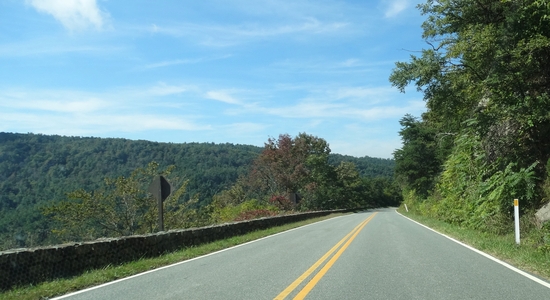
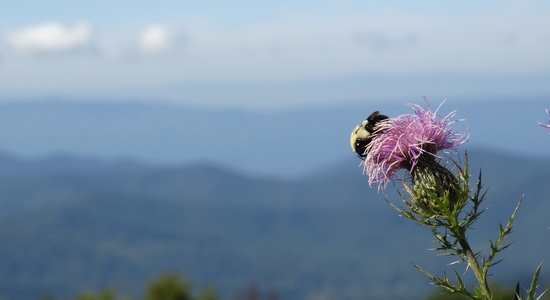
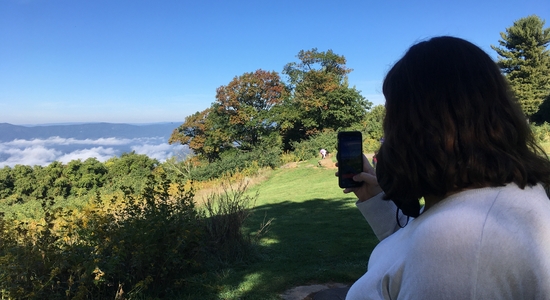
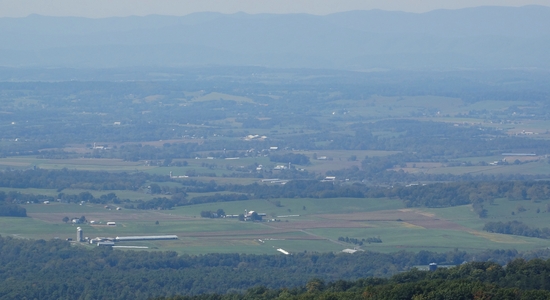
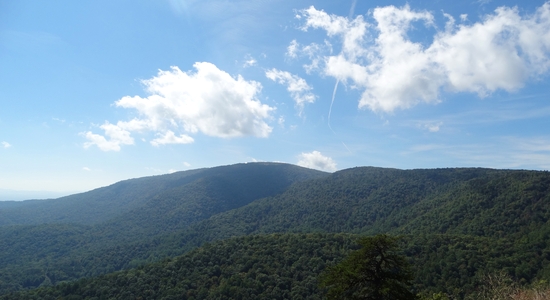
"Life is too short to drive a boring car" has always been my car buying motto. Cars are meant to be
driven. So it is roads like this, as well as, Blue Ridge Parkway, Foothills Parkway and Tail of the Dragon
that I really enjoy driving my cars.
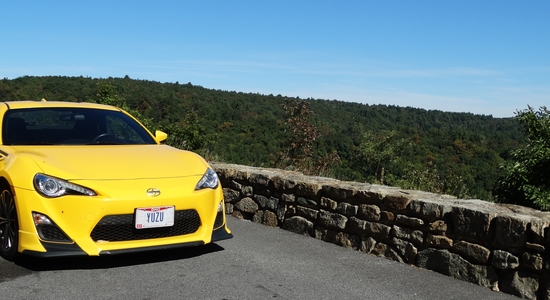
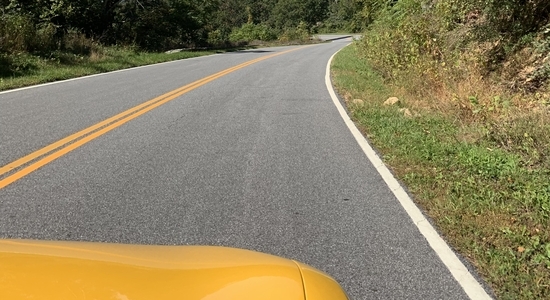
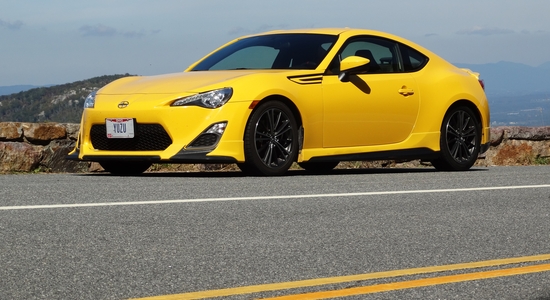
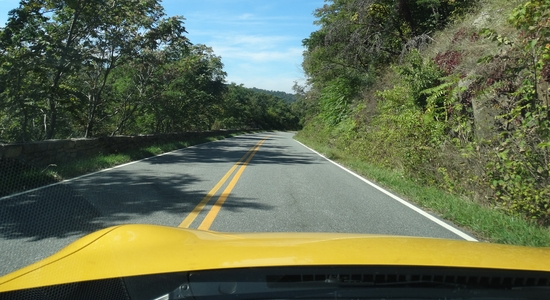
Click here to see all of my photos of Skyline Drive.
After a little more than four hours of driving and stopping to take in the scenery we completed our cruise on
Skyline Drive at Rockfish Gap at about 2:00pm. Next, we traveled east on Interstate 64 to Charlottesville.
Sarah's contribution to today's itinerary was a visit to the University of Virginia. We had a great pizza
lunch near campus at Mellow Mushroom before walking to the university.
UVA was founded in 1819 by Thomas Jefferson and he also conceived and designed the original architecture and the
grounds of what is now the central campus. The grounds were planned and centered upon a library, the Rotunda,
rather than a church, distinguishing it from universities from that era.


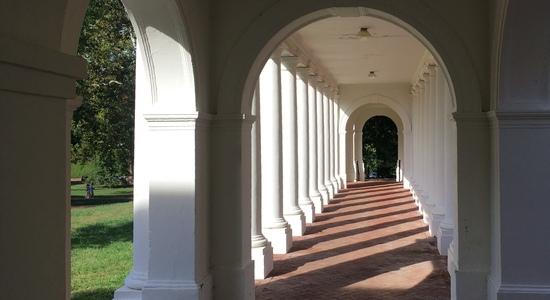
In 1826, the year of Jefferson's death, poet Edgar Allan Poe enrolled at the university, where he studied ancient
and modern languages and excelled in Latin. The Raven Society, an organization named after Poe's most famous
poem, continues to maintain 13 West Range, the room Poe inhabited during the single semester he attended the
university. Poe left because of financial difficulties.
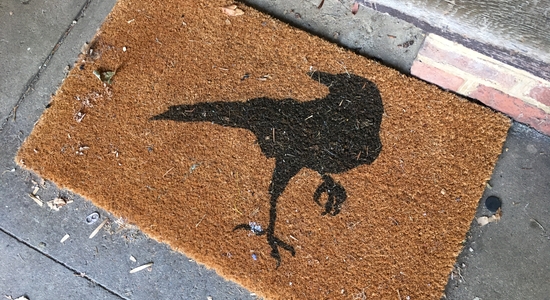

East of the Rottunda is the Memorial to Enslaved Laborers. The memorial honors the lives, labor, and
resistance of the enslaved people who lived and worked at UVA at some point between 1817 and 1865. The
memorial's ring is large enough for some 4,000 names of enslaved people known to have worked on what is today the
university grounds during that time. Engraved are 578 names that are known, as of 2020. Another 311 are
known by their first name only, their job, or their relation to others who lived and/or worked there. A single
engraved word remembers each; Henry, butler, woodcutter, grandmother, John, midwife, domestic, sister. Most of
the ring is blank, with only notches, representing the more than 3,000 for whom even this basic information is
unknown. If more names are discovered they will be added.
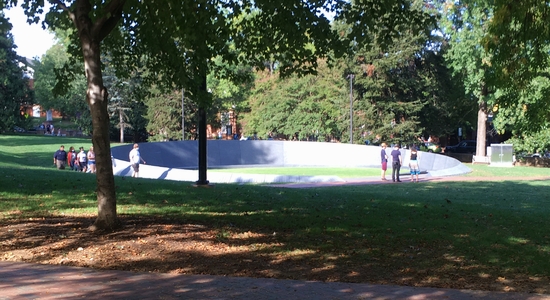
Click here to see all of my pictures of the University of Virginia.
The Memorial is oriented tangent to two paths. The first path leads from the Memorial in the direction of the
North Star, which for the enslaved led to freedom. The second path aligns with the sunset on March 3rd, which
commemorates the day that Union troops emancipated the local enslaved community at the close of the Civil War.
We spent about a half hour walking around the central campus of the university. Our next destination was
Thomas Jefferson's Monticello.
We found a spot in the wooded parking lot and walked to the visitor center. From there we boarded a shuttle
bus that drove us to the top of the small mountain where the main house and grounds are located.
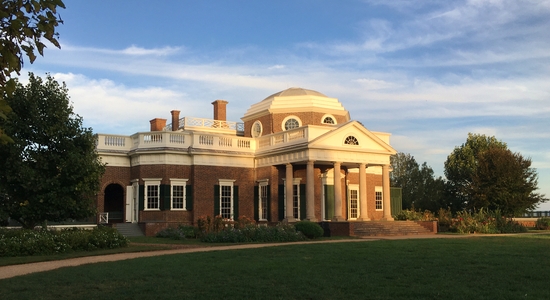
Monticello was the primary plantation of Thomas Jefferson. The name derives from Italian meaning "little
mountain". It is located just outside Charlottesville, Virginia, in the Piedmont region. In May 1768,
the twenty-five-year-old Jefferson directed the leveling of the already gentle top of a 868-foot-high mountain, where
he intended to build his home. And the next year he began designing Monticello after inheriting land from his
father. The plantation was originally 5,000 acres, with Jefferson using the labor of enslaved African people
for extensive cultivation of tobacco and mixed crops.
During our tour of the house and grounds, the narrative did not glorify Jefferson to be more than he actually was,
and didn't attempt to hide the fact that he was a slave owner. In fact, just the opposite, the many stories of
the approximate 400 enslaved laborers were front and center.
The history of Jefferson's relationship with Sally Hemings, a mixed-race enslaved woman, was also
presented. Jefferson fathered at least six children with Hemings, including four that survived to
adulthood. Evidence suggests that Jefferson started the relationship with Hemings when they were in Paris,
where she arrived at the age of 14 when Jefferson was 44. By the time she returned to the United States at 16,
she was pregnant.
We explored the slave quarters, gardens and various workshops. The majority of which are located along
Mulberry Row, a one-thousand-foot road of slave, service, and industrial structures. Something that I had
always known but just now fully realized was the fact that a plantation is really a small, self contained
city. Everything you might need; dairy, a washhouse, store houses, a textile shop, a small nail factory, a
joinery and more.
On the slope below Mulberry Row, enslaved laborers maintained an extensive vegetable garden for Jefferson and the
main house.
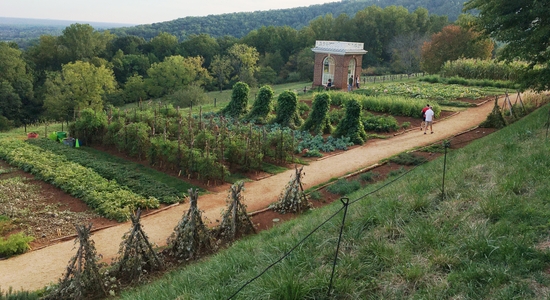
Downhill and to the southwest, is the Monticello Graveyard. The graveyard is owned by the Monticello
Association, a group of lineal descendants of Thomas Jefferson and his wife, Martha Wayles Skelton
Jefferson. Burials in the Monticello Graveyard are usually limited to direct descendants of Thomas and Martha
Jefferson and their spouses, although there are a few exceptions. And burials still take place today.
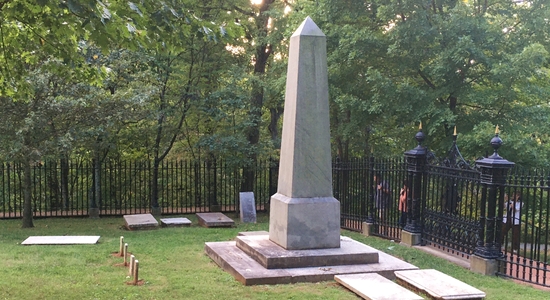

It is noteworthy that Jefferson's gravestone, with an epitaph written by him, does not mention that he was
President of the United States.
Sunset usually means closing time for Thomas Jefferson's Monticello. But tonight there was a special light
show presentation. "Lights, Liberty and the Pursuit of Happiness," was a 3-D light projection onto the main
house. The concept of the show played with the ideas of the Declaration of Independence; "Life, Liberty and
the pursuit of Happiness".
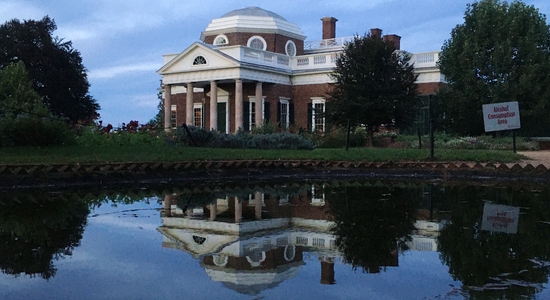
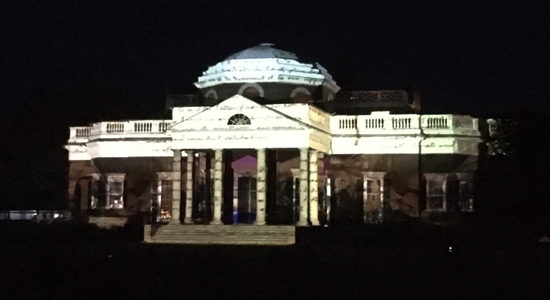
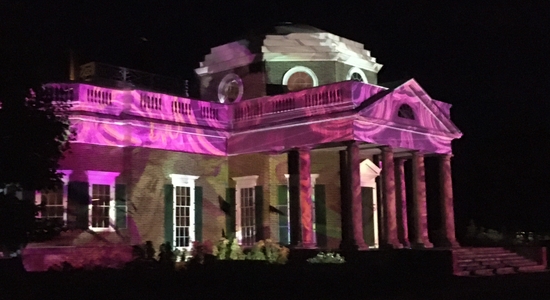
Click here to view all of photos from Monticello.
Sarah and I patiently waited for the shuttle bus to return us to the visitor center. Then we returned to my
car for the two and a half hour drive back to Sarah's apartment in Rockville. What a great day of sightseeing
and history.
Tomorrow Sarah and I will be exploring around Frederick, Maryland.
Previous | Blog list | Next
|